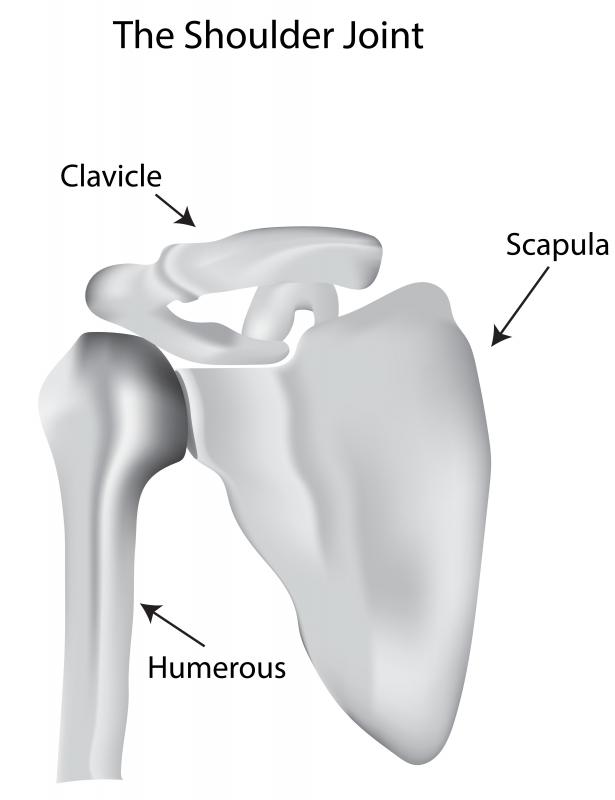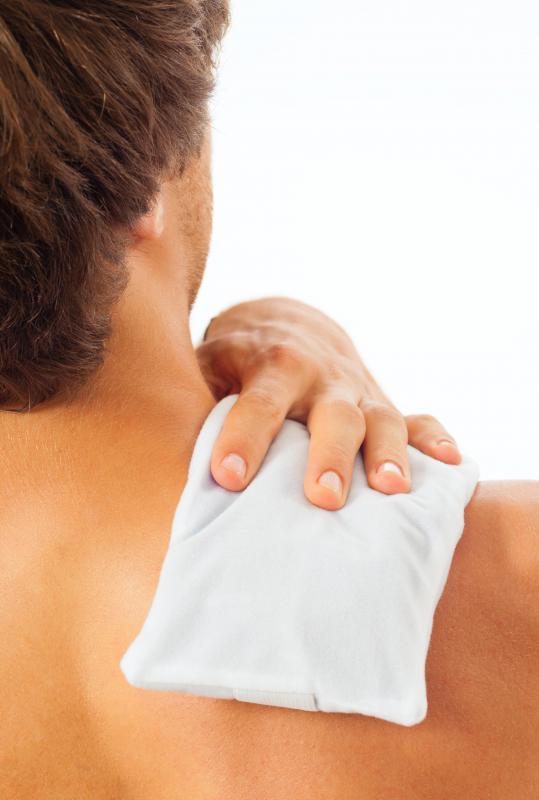At WiseGEEK, we're committed to delivering accurate, trustworthy information. Our expert-authored content is rigorously fact-checked and sourced from credible authorities. Discover how we uphold the highest standards in providing you with reliable knowledge.
What is the Glenoid Labrum?
The glenoid labrum, also called the glenoidal labrum, describes a ring of flexible cartilage that lines the cavity of the shoulder joint. Its purpose is to increase the depth of the shoulder cavity and add overall stability to the shoulder joint. When the shoulder joint receives a traumatic injury, dislocation is sometimes accompanied by a glenoid labral tear, which is a tear in the adjacent cartilage. Treatments for glenoid labrum injuries range from conservative pain management and exercise to surgical repair and stabilization of the entire shoulder joint.
The shoulder joint consists of the joining of three bones: the long upper arm bone, or humerus; the collarbone, or clavicle; and the shoulder blade, or scapula. It is the most flexible joint in the human body, with a wider range of motion than any other joint. This also makes it the most unstable joint in the human body, and it is quite susceptible to dislocation-type injuries. The shoulder joint is classified as a ball and socket joint because the top of the humerus is shaped like a ball and fits into a socket in the scapula. This socket is quite shallow, and the ball of the humerus is too large to fit entirely within the socket.

The glenoid labrum helps to compensate for this inherent instability in the shoulder. It is attached to the socket in the scapula and forms a lip or rim around the area where the ball of the humerus meets the scapula. This has the effect of making the cavity in which the humerus sits up to 50% deeper than it would otherwise be. In addition, several of the ligaments of the shoulder joint attach at the glenoid labrum. These two primary functions of the glenoid labrum contribute to the overall stability of the shoulder joint.

The most common type of injury to the glenoid labrum involves tearing of some part of the cartilage ring. Traumatic injuries to the shoulder joint from a fall or a heavy lift can dislocate the humerus from its socket; this type of injury sometimes results in a glenoidal labral tear as well. Labral tears can also be the result of repetitive overhead motion of the shoulder joint in sports such as golf, baseball pitching, and weight lifting.

Since the glenoid labrum is a soft tissue, injuries cannot be seen on a standard x-ray. The tears are usually diagnosed when a patient has suffered a shoulder injury or dislocation and experiences pain, locking or popping of the joint, and decreased range of motion. A CT scan or MRI scan can be helpful to pinpoint the source of a soft tissue injury such as a glenoid labral tear.

Treatment for a glenoid labrum tear will depend on the extent and severity of any associated injuries in and around the shoulder joint. Normally, conservative treatment is the first course of action. This may include an alternating combination of rest and special exercises for the injured area, as well as ice packs and anti-inflammatory medications to alleviate any swelling. In the case of a severe traumatic injury or an injury that doesn't respond to conservative treatment, arthroscopic surgery may be necessary to repair tears to the glenoid labrum as well as other injured tendons and ligaments.
AS FEATURED ON:
AS FEATURED ON:

















Discuss this Article
Post your comments